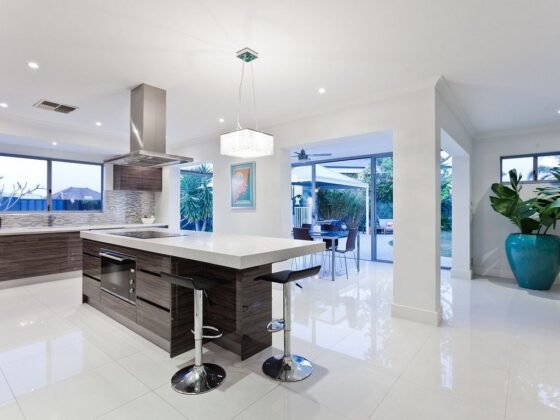Table of Contents Show
Your home interior could have a significant impact on your mood. If done right, you could have a relaxing place after a busy day.
Or if you plan to sell it in the future, then a home interior with wood shades can help sell your home faster. That’s because wood shade trends don’t fade quickly.
With such, here are some ways on how you can mix wood shades in your home interior:

1. Set Dominant Wood Tones
Every aspect of your home interior requires planning and choosing the wood tones should be part of it. That way, before you buy a table or a chair, you’ll know what color will go with your preferred dominant wood tones. And by doing so, you can achieve cohesiveness and smooth flow of your overall interior.
Moreover, your dominant wood tone should appear in windows, cabinetry, flooring, or other significant finishes. Apply this rule even if you have more than one wood tone. Or you can even make it appear in your largest piece of wood furniture.
If you’re in need of wood supplies or elements, checking Elmwood Reclaimed Timber and others can help.
2. Contrast Light and Dark Wood
After setting the tones, you should contrast light and dark wood shades. Here, you can go bold or be subtle about it.
If you go for a bold look, you can create a high-contrast space by having dark wood furniture with light wood finishes. When doing this, you should consider playing with two ends of the dark and light spectrum.
That way, the shades can both be visually impactful and subtle on their own. For instance, go for a more detailed and larger graining on the wood floor and cabinet. Then, add a table that has smaller wood grain.
Moreover, creating a harmonious balance is the way to contrast light and dark wood shades properly. Do so by balancing the wood finishes throughout the interior. For instance, you have whitewashed elements in your space.
Then, having pieces of furniture with dark-stained shade throughout the room will give an airy effect. With such, you can avoid having a lopsided-looking space.
Read Also:
3. Place A Buffer
To make the contrast have a smooth transition, you may place a buffer. Instead of drawing attention to the dissimilarity of a wood floor and a wood table, you may want to add some carpet or rug. By doing so, you can let them breathe. For instance, place a rug between a floor with warmer wood and a vintage table.
4. Don’t Forget to Repeat Accent Wood Color
You should also have an accent wood color. This refers to a small relative area offering a contrast due to its difference in saturation, intensity, or hue. And your accent wood-tone should at least appear twice.
However, it’s still best to stick to the 80/20 rule so you wouldn’t overdo it. This means the 20% will be the accent tone, which could be a lighter or a darker shade, depending on your choice. Then, the remaining 80% should be the wood flooring or others that resonate with the dominant tone.
For instance, you can have dark wood shades on your table or even your wall as the accent and repeat it on the wood panes of your windows. That way, you can stay by the rule if your wooden floor has the same tone as your wood window blinds. Doing so will also help set a harmonious balance throughout the room.
5. Add Raw Woods for Texture
If you have an existing interior design, then worry not as you can still add wood shades to it. For instance, if you have a modern interior design, you can add raw wood. Or you may want to cover the floor or wall with planks of red oak.
You can even add a whitewood framework lumber as your built-in room divider. With such, you can add some texture to your room.
6. Create Cohesiveness with Finish
You can create cohesiveness by adding similar wood finishes or grains to your wood tones. For instance, if you have a glossy wood table or floor, your chairs or side tables should also have a glossier finish. Or go with a rustic grain finish for similar wood floor graining.
Conclusion
There are many ways to level up your home interior, but mixing wood shades is one of the best. You can start by choosing your dominant wood tone so other shades will follow.
Then, form a harmonious balance by having the proper contrast and accent wood tone. Even if you have an existing interior design, you can still embed wood shades by doing the tips above.










